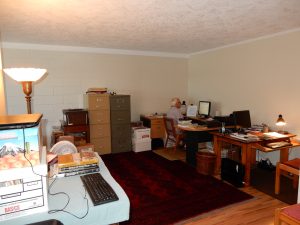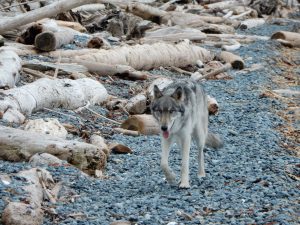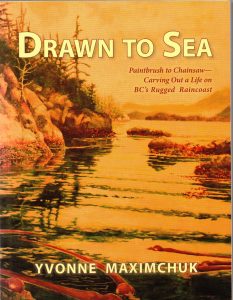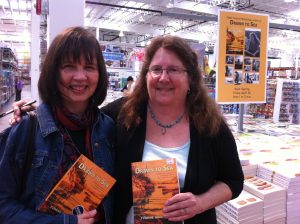“This isn’t working!” I said over and over as I shifted my computer desk from the bedroom to one living room wall and then another.
In my writing workshops I always stress the importance of a place to write. But all of a sudden Rick and I were crammed into a living space less than half the size we were accustomed to. And carving out a creative spot for both of us was threatening to turn into a make or break issue.
In our three-storey heritage house, I had a spacious room with lovely big windows. Rick had even more space in his office on the lower level. Selling our home of 25 years and temporarily moving into an apartment meant going from seven bookcases to one, six filing cabinets to two and three big desks to two.
Of course — even though I meticulously measured rooms and furniture – my carefully planned placement of office furniture didn’t work out. As non-fiction writers we seem to need an extraordinary amount of space to store and inevitably spread out books, newspaper clippings and photocopies of old documents, as well as our own scribbled notes.
 So now, after numerous trips to our storage unit, we live with boxes of file folders and stacks of books. I’ve added another large desk to our writing space and also a small table in the kitchen. Whoever gets there first often claims the kitchen table as a work station outside meal times. And from time to time, I even use the top of the microwave as a stand-up desktop.
So now, after numerous trips to our storage unit, we live with boxes of file folders and stacks of books. I’ve added another large desk to our writing space and also a small table in the kitchen. Whoever gets there first often claims the kitchen table as a work station outside meal times. And from time to time, I even use the top of the microwave as a stand-up desktop.
The largest wing of the L‑shaped living room has become our shared office. That’s where we spend the bulk of our writing time. And that’s the biggest challenge of all. Before, we worked in separate rooms on different floors of the house. Now, seated at our computers, we can just about shake hands.
Rick’s working on a book about West Coast rum running. He tries to restrain himself but several times a day blurts out, “Listen to this!” and proceeds to read me a quote by some prohibition era liquor distribution entrepreneur.
I must admit I’m not much better. I’m researching wolves and it’s nearly impossible not to exclaim, “Look at this photo!” Or to keep the volume down during a chorus of wolf howls in a documentary I’m watching online.
But our transition work space hasn’t been all struggle. Rick’s “office” is closer to the main living area than in our previous home and he finds himself at his computer earlier in the day, thus producing more. And the move has made us both appreciate just how important a suitable work space is to our creative wellbeing. All things we’ll consider while looking for our next house.


